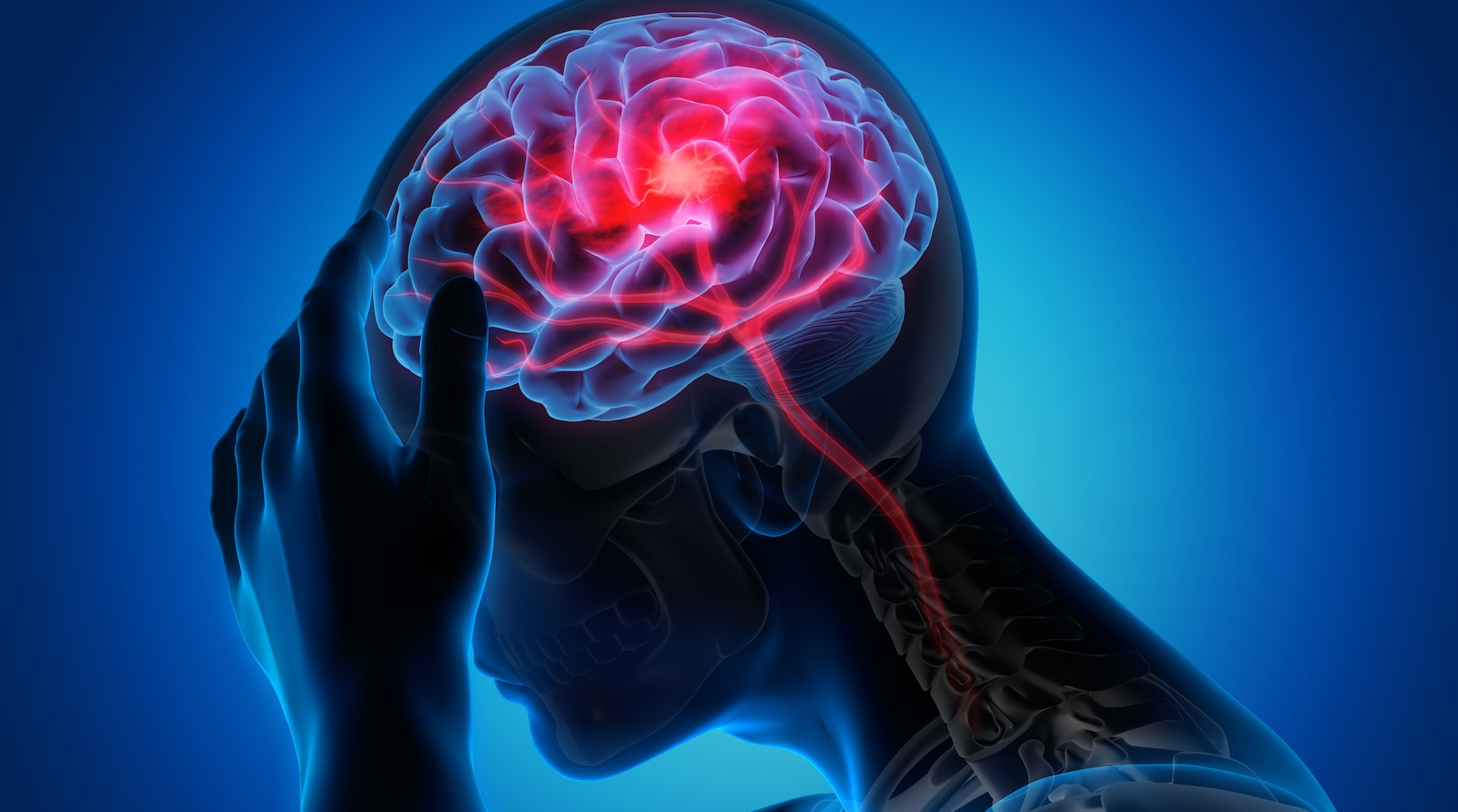A fast metabolism may seem like the ultimate health goal. A superpower that lets you eat what you want, stay trim, feel great, and radiate health effortlessly—or so the popular narrative goes. But like most “too good to be true” promises, boosting your metabolism is not as easy or straightforward as it may seem.
While there is some evidence that it’s possible to rev your metabolic engine, these tactics are often short-lived, unsustainable, or insignificant—they fail to make a meaningful difference in the number of calories you burn at rest.
However, you can take steps to support a healthy metabolism, which leads to positive impacts such as increased muscle mass, less body fat, and reduced risk of developing cardiovascular and metabolic diseases. Let us explain.
What do we mean by metabolism?
Metabolism is the sum of all the biochemical reactions in your body at any given moment that provide your body with the energy needed to function. These processes include breaking down nutrients from food to create energy so cells can grow, develop, and repair. This allows us to move, function, and do everything we need to do.
Metabolic rate, or total energy expenditure, refers to the amount of energy an individual uses to support their body functioning. It’s sometimes calculated as the total amount of energy your body uses or burns per day (typically stated as kcal or kJ per day). This is often what people are referring to when they talk about “their metabolism.” We’ll use the two interchangeably here.
However, resting metabolic rate and basal metabolic rate are different: they specifically refer to how much energy your body burns at rest. The two terms are often used interchangeably. However, they are slightly different. RMR is typically recorded after 12 hours of no exercise and at least 15 minutes of rest in a seated or lying position. BMR is stricter, generally measured in the morning after an overnight fast and 24 hours of no exercise.
An individual with a faster metabolism burns more calories each day and requires more energy to support day-to-day functioning. A faster metabolism doesn’t mean healthier—but more on that later.
Metabolic rate consists of three components:
- Basal metabolic rate (BMR) is the minimum amount of energy your body needs to function at rest. BMR accounts for the most significant portion of daily energy expenditure.
- Diet-induced thermogenesis refers to the amount of energy it takes to metabolize (break down) the food you eat and store.
- Activity energy expenditure is the additional energy you burn through movement and exercise—both anaerobic and aerobic exercise.
Based on height and weight, and distinguished by sex, an average man has a BMR around 1,700 kilocalories (kcals) per day, while an average woman has a BMR around 1,400 kcals per day. However, every body has unique needs based on many factors.
What determines your metabolic rate?
BMR is by far the biggest contributor to metabolic rate, accounting for 60-75% of total energy expenditure in sedentary people. The most influential determinant of BMR is size—the larger the body, the more energy required for that body to function. This has multiple explanations: For one, it takes more energy to move if you’re bigger. Also, the bigger the individual, the larger the organs, which burn more energy to function correctly. This is a common misconception with metabolism, as we tend to think that an individual who appears thin has a higher metabolic rate when the opposite is true. Consider a truck versus a sedan—even while idling, the truck needs more fuel to run than the sedan because of its size.
Age also significantly impacts metabolic rate. Energy expenditure is highest throughout childhood until about the age of 20. Once you’re done growing, scientific evidence shows that metabolic rate slows down but remains relatively stable from ages 20-60. Then it declines slightly as you get older. Decreased metabolism during older age may be because we lose muscle mass during this stage of life, as well as changes in how our tissues use energy and lifestyle changes like exercising less.
What accounts for differences in metabolism between people?
In addition to size and age, other vital factors impact metabolic rate.
In general, women tend to have slower metabolisms than men. A significant reason for this is that, on average, men have more muscle mass than women, and muscle needs a lot of energy to function. Men are also typically larger than women. And as mentioned, bigger bodies mean larger organs, which also require more energy to work.
Sex aside, people with more muscle mass and lower fat mass have higher metabolic rates. Because fat is stored energy, whereas muscles help us function, it takes significantly more fuel to maintain muscle mass than fat mass. The metabolic rate of muscle is 13 kcal/kg/day, compared to 4.5 kcal/kg/day for fat. This translates to burning about 6 calories per pound of muscle per day versus 2 calories per pound of fat.
At the same time, some high-endurance athletes may have lower metabolic rates than expected. This is likely because they’ve become more efficient at using energy through high-intensity exercise and training. A small study found that endurance athletes could temporarily reduce metabolic rate during long events to extend their endurance. Another study of endurance cyclists found that decreases in metabolic rate following a period of intense training allowed their bodies to restore balance, conserve energy, and recover quicker.
Lastly, though it’s complex, there’s some heritability to metabolism and metabolic health. Research links genetics to traits such as fat distribution and glycemic and fat measurements, and conditions such as Type 2 diabetes and obesity.
How is metabolism controlled in the body?
Our metabolism is mainly controlled by our endocrine system (hormone-producing glands) and nervous system. These work to regulate metabolic pathways to maintain homeostasis and proper cellular functioning.
The body constantly burns energy to facilitate cellular functioning by breaking down nutrients into energy molecules (ATP). Glucose is the body’s primary (and preferred) energy source, while breaking down fat is an alternative energy option. When you eat, your blood glucose level increases. Your body releases insulin to help move that glucose into cells, where it can be used for energy. Excess blood glucose becomes stored fat. When you aren’t eating, blood glucose levels drop, and the body releases glucagon to help release stored glucose for the body to use as energy. Insulin and glucagon help maintain blood glucose homeostasis and are crucial metabolic health. Importantly, reflective of its role in promoting energy storage, insulin generally has a suppressive effect on energy expenditure, significantly reducing whole-body metabolic rate.
Two thyroid hormones—thyroxine (T4) and triiodothyronine (T3)—help regulate BMR. Produced by thyroid-stimulating hormone (TSH), T4 and T3 determine the speed of metabolic chemical reactions. They enter our cells, increase ATP (energy) production in mitochondria, and activate glucose processing genes in the nucleus, which speed up metabolism and produce body heat.
Beyond this, the central nervous system—including the sympathetic nervous system and hypothalamus—also plays a vital role in metabolic regulation. It helps control glucose levels, lipid metabolism, and overall energy balance.
What is a healthy metabolism?
A fast metabolism isn’t always better. While a fast metabolism is often associated with better health, this is an oversimplification and not an accurate one. An unhealthy metabolism occurs when a metabolic disorder disrupts the body’s nutrient processing, energy production, and energy distribution. A healthy metabolism is simply one that can efficiently use the nutrients consumed and convert them to energy that cells can use to function optimally. Depending on the health goals of each person, a slow metabolism could be just as healthy as a fast one and even healthier in certain circumstances. For example, if weight gain is the goal, a faster metabolism will make this difficult and could lead to other health issues. A super-fast metabolism should not be the ultimate health goal or a realistic one.
Healthy metabolic rates support proper body functioning daily, which looks different for each individual.
How can we impact our metabolism?
Many factors influence metabolism, including sex, age, size, and genes. While these things are outside your control, our metabolism responds to lifestyle choices. These choices and behavior patterns can positively (or negatively) affect metabolic rate and deeply impact overall health and wellness. Below are some measures you can take to support a healthy metabolism.
1. Physical activity
At rest, it takes nearly three times more calories to maintain muscle than it does to maintain fat. So, adding muscle to your frame through resistance training—such as lifting weights, using machines and resistance bands, or doing body-weight strength training—may increase metabolic rate. This type of exercise breaks down muscle. During rest, your body repairs the muscle through muscle protein synthesis (MPS), which maintains and builds muscle mass. MPS increases in response to exercise, which impacts metabolic rate.
“A pound of muscle burns an estimated 6-10 calories per day,” says Brandon Harris, a performance coach and owner of Premier Fitness Systems in Scottsdale, Arizona. “This isn’t a vast number, but it does make a difference. And more importantly, training to build muscle contributes significantly to overall calorie expenditure and well-being. Strength has significant importance in longevity and peak performance.”
It’s important to note that building muscle is often not as easy as it may seem. “It’s a gradual process that requires consistent resistance training, proper nutrition, and recovery,” says Harris. Evidence shows that muscle growth or hypertrophy, is dose-dependent, so more significant gains require higher training volumes and more time in the gym (think an hour or more versus 15-minute sessions) for 10 or more weeks. Still, considering the health benefits, it’s a worthwhile investment. Research has shown that after 10 weeks of consistent resistance training, resting metabolic rate rose by about 7%. Resistance training can also enhance insulin sensitivity and improve glucose tolerance.
And there’s the excess post-exercise oxygen consumption (EPOC) effect, or “afterburn.” During exercise, the body requires more oxygen to support the increased energy need, raising metabolic rate. EPOC happens after a workout as the body continues to deliver oxygen to tissues and rebuild energy stores in muscles that were depleted during exercise. This period of elevated metabolic rate varies in length depending on the type and intensity of the exercise.
When researchers compared steady walking and high-intensity sprinting, they found that sprinting produced significantly higher EPOC and higher O2 and anaerobic energy expenditure. While studies on resistance training have shown varying results, it can keep metabolic rate elevated for 22 to 72 hours.
Another EPOC study comparing high-intensity interval training (HIIT) to resistance training in women found that both groups had statistically higher energy expenditure at 14 hours post-workout, with an 11.8% increase in VO2 (oxygen uptake). They also found this elevation was not present at 24 hours, and there was no significant difference between the types of training.
2. Sleep
Our sleep patterns can also impact metabolism. Lack of sleep and poor sleep are highly correlated with metabolic disorders and have been causally linked to disruptions in glucose homeostasis, metabolic syndrome, and Type 2 diabetes.
During sleep, our metabolic rate naturally decreases by about 15% compared to when we are awake and active. This higher rate while awake and lower rate during sleep both contribute to daily energy expenditure and metabolic rate. Research has shown that periods of sleep deprivation can decrease daily metabolic rate. One study found that after three weeks of sleep restriction and circadian rhythm disruption, metabolic rate decreased by 8% compared to original levels. Another study found that one night of recovery sleep may bring your body back to baseline, but repeated sleep deprivation may have long-term effects.
Additionally, not getting enough sleep impacts hormone levels, which affects metabolism. One study found that after one night of sleep deprivation, cortisol levels increased, which can contribute to glucose dysregulation and lead to impaired glucose tolerance and insulin resistance.
It’s not just how much you sleep—when you sleep matters too. Humans are diurnal, meaning we’re naturally active during the day and sleep at night. Technology has allowed us to continue working during night hours, which can negatively impact metabolism. Consistent night shift work has been associated with Type 2 diabetes, and even short-term night shift work (10 days) has been shown to negatively impact metabolism, with some people showing prediabetic glucose metabolism.
3. Food: how does what we eat affect metabolism?
Diet is another major factor impacting metabolism. Thermogenesis—which includes TEF (thermic effect of food) or DIT (diet-induced thermogenesis)—is part of your daily calorie expenditure.
Each macronutrient has a different DIT: Protein is 20-30%, carbohydrates is 5-10%, and fat is 0-3% of each of their caloric content. Meaning that it takes 20-30% of the protein calories consumed to digest it. It requires far more energy to process dietary protein (increasing metabolism) than it does to process carbs or fat.
Protein has a higher DIT because it uses a large amount of adenosine triphosphate (ATP) during metabolization and storage. ATP is our body’s energy-carrying compound—the more ATP we use, the more energy we expend.
Protein also helps maintain lean muscle while losing fat. One study found that people who followed a high-protein diet (40% protein, 35% carbs, 25% fat) had higher energy expenditure (by about 80 kcals/day) and higher fat loss (about 8 more grams/day) compared to those who followed the higher-carb diet (15% protein, 55% carbs, 30% fat).
Eating a diet lower in carbohydrates and higher in protein and fat has been associated with higher RMR (resting metabolic rate). In one study, people who ate a diet of 20% carbs burned around 200 more calories per day than people whose diet was 60% carbs despite eating similar amounts of protein. This is likely due to differences in hormones released during carbohydrate metabolism. Ghrelin and leptin levels differed between those who followed the low-carb diet compared to the high-carb diet, potentially impacting the metabolic rates.
Low-carb diets are also associated with less fiber intake, which can impact our gut microbiome and our metabolic health. While humans can’t digest most fiber, our gut microbes can, producing short-chain fatty acids that support metabolic health.
So when it comes to consuming carbohydrates, less may be more in terms of our metabolic health, but you don’t need to go low-carb just to increase metabolism; instead, look for healthy ways to eat carbs.
Lastly, you’ve likely heard about “metabolism-boosting” or “fat-burning” foods like green tea, hot chili peppers, and cold water. It is true that:
- Green tea contains caffeine and epigallocatechin gallate, both of which research shows may have a relationship to metabolism (or at least weight loss).
- The active ingredient of chili (capsaicin) has been shown in mice to briefly increase energy expenditure and help block fat tissue from forming.
- Drinking cold water has been shown to raise TEF slightly. The body must work harder (and use more energy) to heat cold water than warm or room-temperature water.
But take these claims with a grain of salt: For all of these foods, the effects are marginal and brief. While they might help you burn a few more calories upon consumption, they can’t drastically increase your metabolic rate.
Do metabolism-boosting supplements really work?
Supplements that promise to boost metabolism contain substances, like green tea, caffeine, or others that can temporarily impact thermogenesis and increase caloric burn in the short term. However, these increases are minimal and won’t meaningfully increase metabolic rate long-term.
Also, most of these supplements have not been studied in humans to have the effects they claim. These health claims are not evaluated by the FDA (if you’ve ever seen an * after a stated claim, that’s often why). So, while these supplements may include ingredients that can temporarily increase metabolic rate, they are not the metabolism-boosting cure-all many claim them to be.
What’s the bottom line? Can you boost metabolism?
You can enhance your metabolism to some degree, but not in a way that will allow you to eat whatever you want, never exercise, and stay healthy. Instead, focus on lifestyle habits that support a healthy metabolism and will positively affect your body composition, weight, and metabolic health.
Learn how your body responds to your lifestyle
The best way to understand what habits and foods help you achieve balanced blood sugar is with a continuous glucose monitor and an app like Levels to help you interpret the data. Levels members get access to the most advanced CGMs and personalized guidance to build healthy, sustainable habits. Click here to learn more about Levels.









